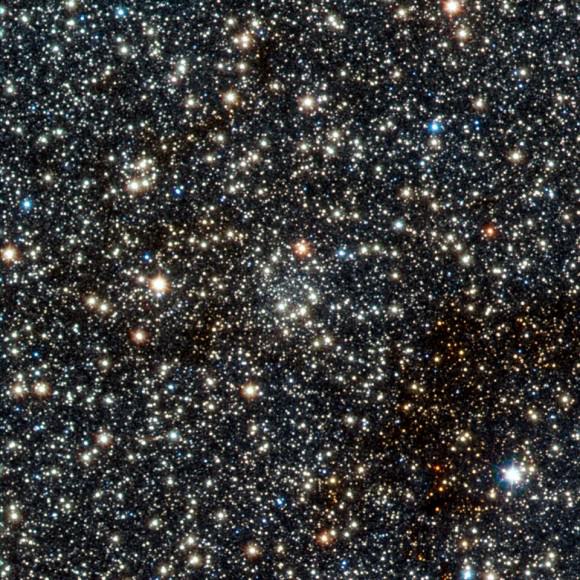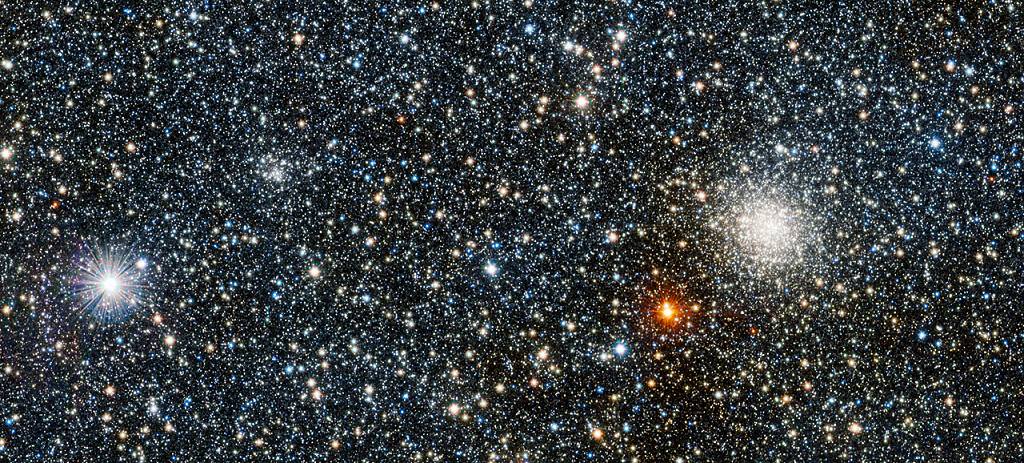[/caption]
Where there once was 158, there is now more… Globular clusters, that is. Thanks to ESO’s VISTA survey telescope at the Paranal Observatory in Chile, the Via Lactea (VVV) survey has cut through the gas and dust of the Milky Way to reveal the first star cluster that is far beyond our center. But keep your eyes on the prize, because as dazzling as the cluster called UKS 1 is on the right is, the one named VVV CL001 on the left isn’t as easy to spot.
Need more? Then keep on looking, because VVV CL001 isn’t alone. The next victory for VISTA is VVV CL002, which is shown in the image below. What makes it special? It’s quite possible that VVV CL002 is the closest of its type to the center of our galaxy. While you might think discoveries of this type are commonplace, they are actually out of the ordinary. The last was documented in 2010 and it’s only through systematically studying the central parts of the Milky Way in infrared light that new ones turn up. To add even more excitement to the discovery, there is a possibility that VVV CL001 is gravitationally bound to UKS 1, making it a binary pair! However, without further study, this remains unverified.

Thanks to the hard work of the VVV team led by Dante Minniti (Pontificia Universidad Catolica de Chile) and Philip Lucas (Centre for Astrophysics Research, University of Hertfordshire, UK) we’re able to feast our eyes on even more. About 15,000 light years away on the other side of the Milky Way, they’ve turned up VVV CL003 – an open cluster. Due the intristic faintness of these new objects, it’s a wonder we can see them at all… In any light!
Original Story Source: ESO Press Release.

